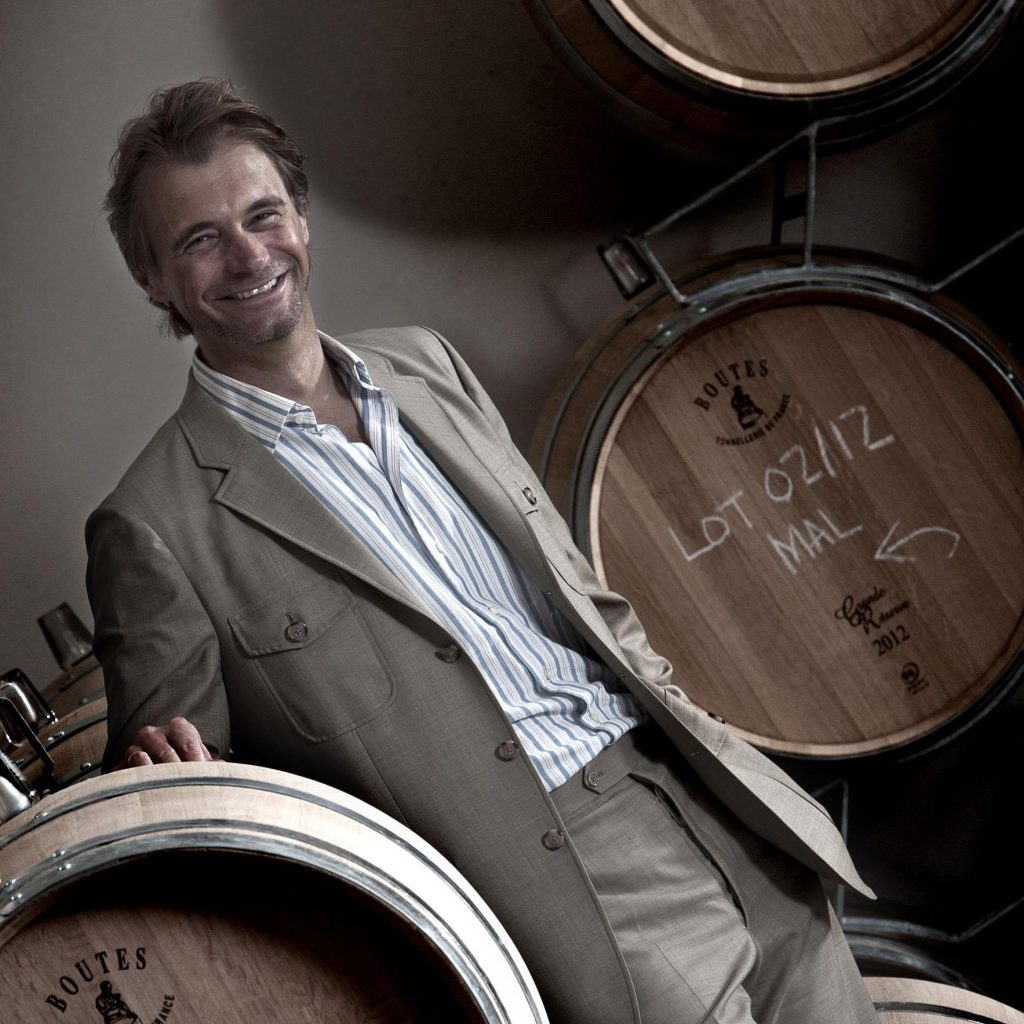A moment with Constantia Glen’s Alexander Waibel
Author: Adam Holden

Fine wine specialist Adam Holden catches up with Constantia Glen’s Alexander Waibel to get a taste for their wines, and their winemaking philosophy.
It’s nine years since I made my first visit to Constantia Glen in South Africa’s Western Cape. They were quite new at the time. They made their first white in 2005, with the reds arriving in 2007. I was already in love with the wines which possessed an elegance I rarely found in South African reds. Now that they have grown up a bit I caught up with owner (Dr) Alexander Waibel to see what they’ve been up to.
Alex, your family bought the farm which is now Constantia Glen in the 1960s. It wasn’t until 2000 that you decided to start plant planting vines: what made you do it?
I grew up in a wine-loving family in Austria. It seems crazy to say it now – we used to have Ch. Lynch-Bages as a house wine! But, that was back when you could buy it for about 20 Shillings. Of course, this built an enduring love of Bordeaux. Constantia is South Africa’s oldest wine-producing region. It was a logical step to plant here and, as we looked in detail at the estate, we were more and more convinced that we had a unique opportunity here in the Cape. We wanted to produce elegant wines in the Bordeaux style. If we had thought that all we could succeed with was Shiraz, we wouldn’t have done it; I have European taste, and I wanted a wine to match.
Why is Constantia Glen so special?
All of Constantia benefits from its position between two oceans, which moderate the climate. The unique thing about our estate is that it sits in saddle between Constantiaberg and Table Mountain. This break in the hillside provides us with late afternoon sun. It gives perfect conditions for a long slow ripening of our black grapes. When the rest of the valley is in shadow, we get another hour of sun here. The fact that we have this unique position reinforces our philosophy that the wines are made in the vineyard, not the winery.
How would you define your two reds ‘Three’ and ‘Five’?
They represent our interpretation of Right and Left Bank Bordeaux. We make changes for the vintage conditions, so we don’t follow an exact recipe. The Three is always Merlot dominated with Cabernet Franc and Cabernet Sauvignon. The Five, on the other hand, has all of five of the classic Bordeaux varietals but with Cabernet Sauvignon in top spot. Both wines have a significant proportion of Cabernet Franc in the blend, which is a variety I love. Luckily, our winemaker Justin [van Wyk] shares my enthusiasm! The Cab Franc brings a lot of the earthy complexity to the wines, as well as a floral note, and is a bit of a calling card for CG. The Five is built to age for 10-15 years; the Three will mature nicely for five or more years, but is very much ready to enjoy on release.
What’s changed since we first met in 2012?
Justin took over as head winemaker in 2011, so that would have been his first vintage in charge. At the time we were still finding our style and there was not such a big difference between the Three and the Five. Justin set us on the course to create two distinct personalities for the reds. He has been meticulously adjusting our oak programme over the years to get the right balance for each grape and each wine. Every year, we’re trying something different to bring out the best. We want the oak to complement the wines but never dominate; we want to taste the place, not the wood. The Cabernets in the Five can handle – and benefit more – from new oak than the Three. For the Three, we use a higher proportion of second-fill casks.
The past few years have thrown up some real challenges. How have you been affected by the pandemic?
The first lockdown came towards the end of our harvest, so we were suddenly without our seasonal workforce with 20 tonnes left to pick. Everyone on the estate, from the Chef to the MD had to roll up their sleeves to bring it in. Since then, we’ve had to close our tasting room for much of the time. A a lot of our sales are cellar-door, so we’ve had a big drop. But, actually, there is a silver lining to this; we’ve had demand outstripping supply for years now. We’re taking the opportunity to get to a place where we were taking more control of the way we time releases.
What’s next?
We don’t have any grand plans, just continuously refining and improving what we do. I get approached about buying other wine estates in the Cape quite regularly. But we’re very happy with our perfect 60 hectares in Constantia. As I speak to you, it’s 23 degrees. I’m watching the sun set over False Bay enjoying a glass of 2017 Three.
At this point, with the image of a quite perfect evening in the Cape emblazoned on my mind, Alex’s wi-fi dropped, leaving me looking at the blank Zoom screen. Thankfully, a corkscrew and a bottle of CG’s finest have the magical ability to bring that South African sunshine just a little bit closer.
You can find out more about Constantia Glen’s wines here.


